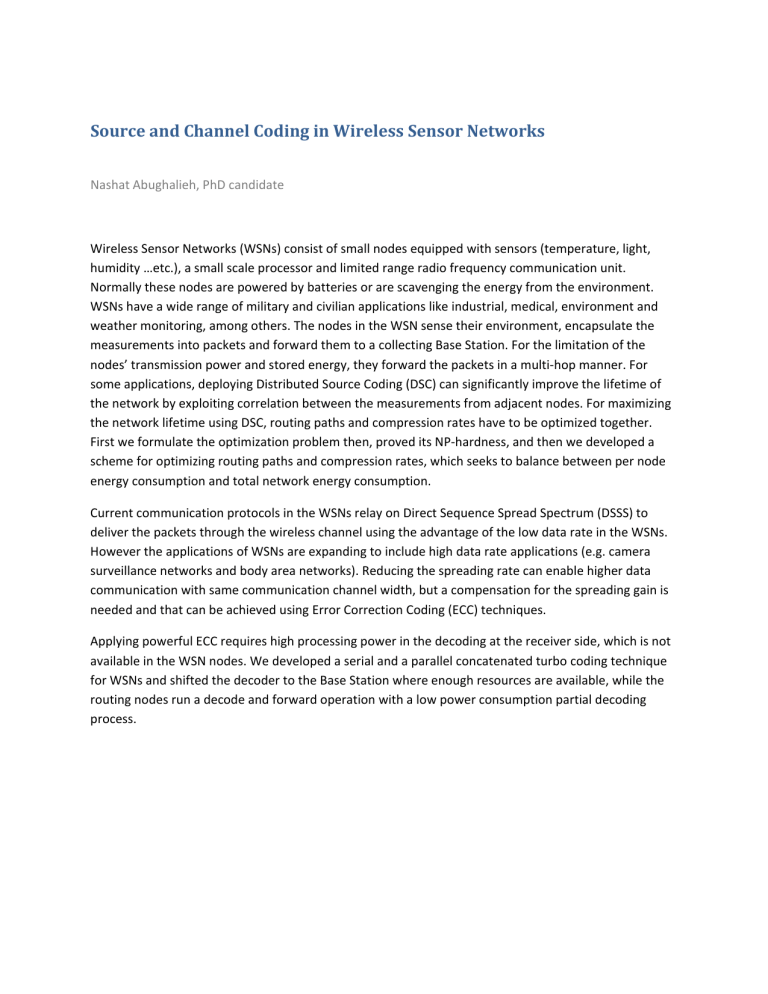
Source and Channel Coding in Wireless Sensor Networks Nashat Abughalieh, PhD candidate Wireless Sensor Networks (WSNs) consist of small nodes equipped with sensors (temperature, light, humidity …etc.), a small scale processor and limited range radio frequency communication unit. Normally these nodes are powered by batteries or are scavenging the energy from the environment. WSNs have a wide range of military and civilian applications like industrial, medical, environment and weather monitoring, among others. The nodes in the WSN sense their environment, encapsulate the measurements into packets and forward them to a collecting Base Station. For the limitation of the nodes’ transmission power and stored energy, they forward the packets in a multi‐hop manner. For some applications, deploying Distributed Source Coding (DSC) can significantly improve the lifetime of the network by exploiting correlation between the measurements from adjacent nodes. For maximizing the network lifetime using DSC, routing paths and compression rates have to be optimized together. First we formulate the optimization problem then, proved its NP‐hardness, and then we developed a scheme for optimizing routing paths and compression rates, which seeks to balance between per node energy consumption and total network energy consumption. Current communication protocols in the WSNs relay on Direct Sequence Spread Spectrum (DSSS) to deliver the packets through the wireless channel using the advantage of the low data rate in the WSNs. However the applications of WSNs are expanding to include high data rate applications (e.g. camera surveillance networks and body area networks). Reducing the spreading rate can enable higher data communication with same communication channel width, but a compensation for the spreading gain is needed and that can be achieved using Error Correction Coding (ECC) techniques. Applying powerful ECC requires high processing power in the decoding at the receiver side, which is not available in the WSN nodes. We developed a serial and a parallel concatenated turbo coding technique for WSNs and shifted the decoder to the Base Station where enough resources are available, while the routing nodes run a decode and forward operation with a low power consumption partial decoding process.


